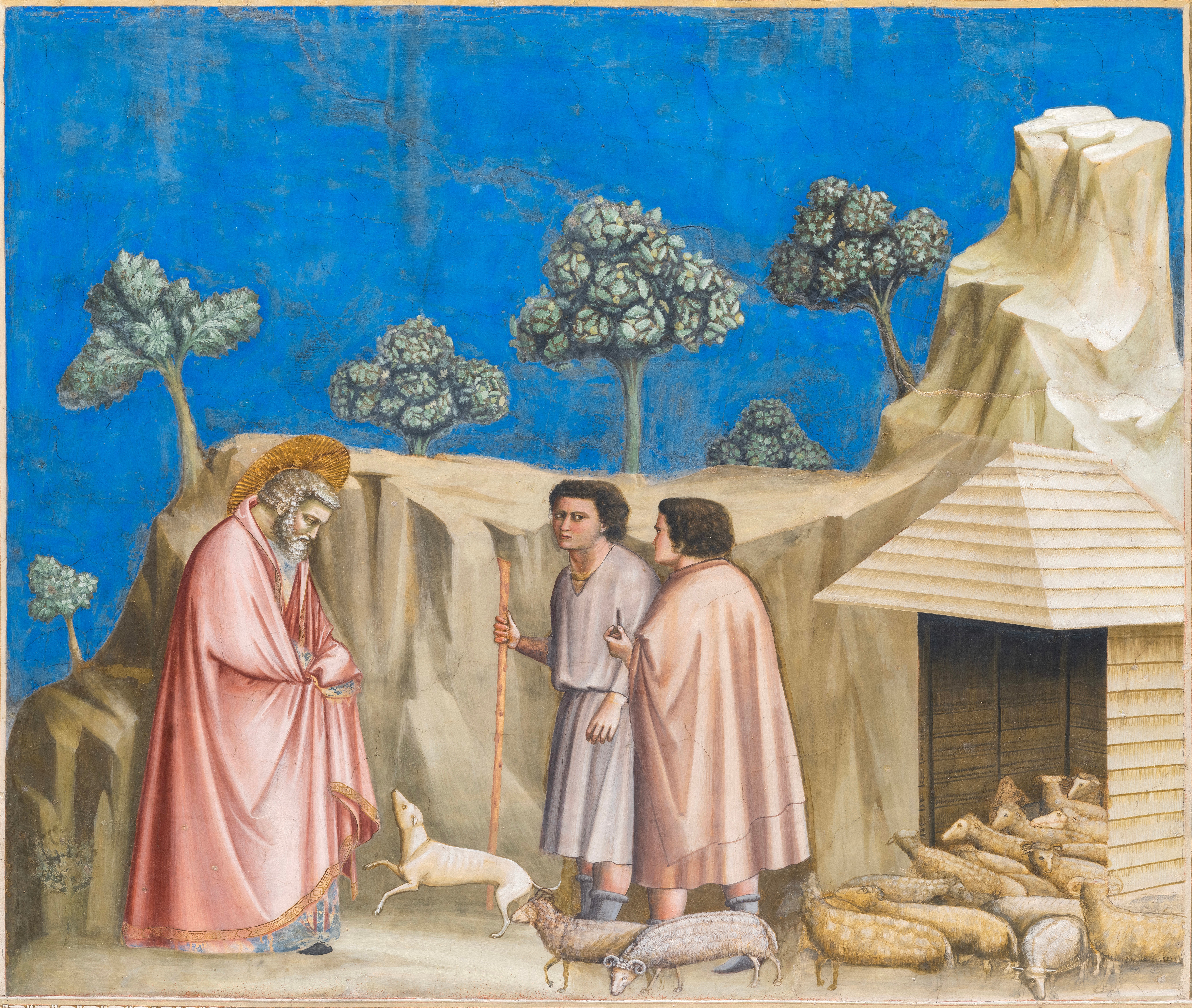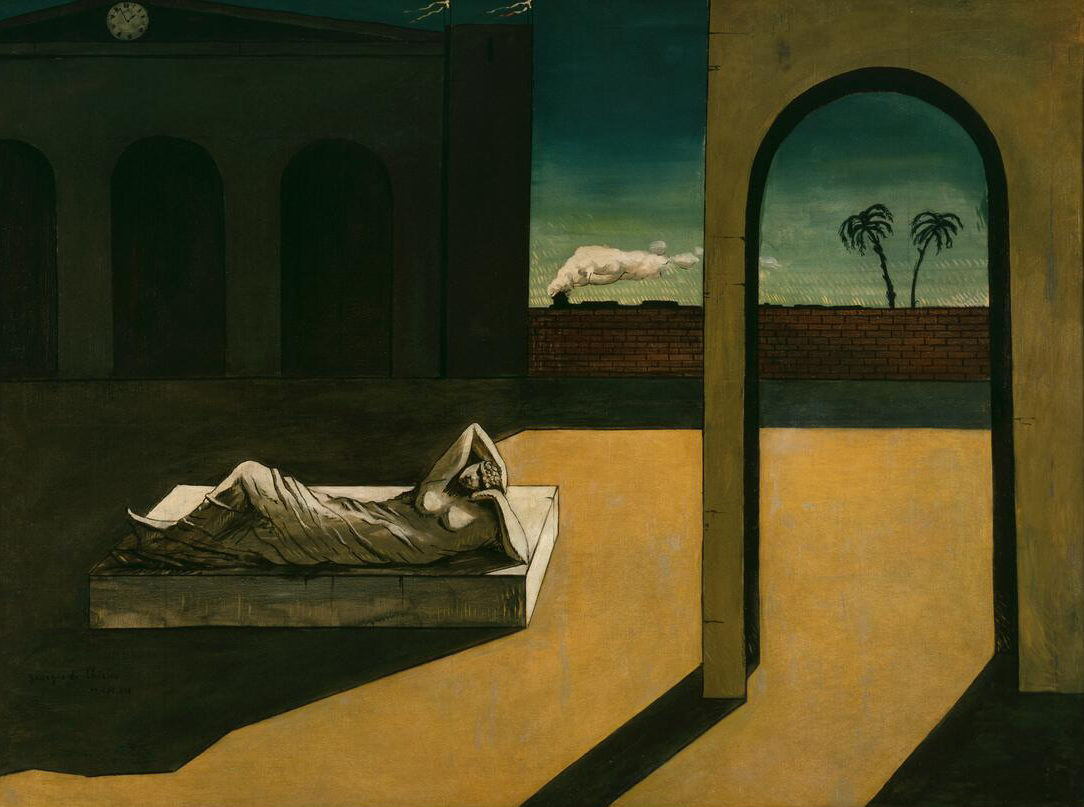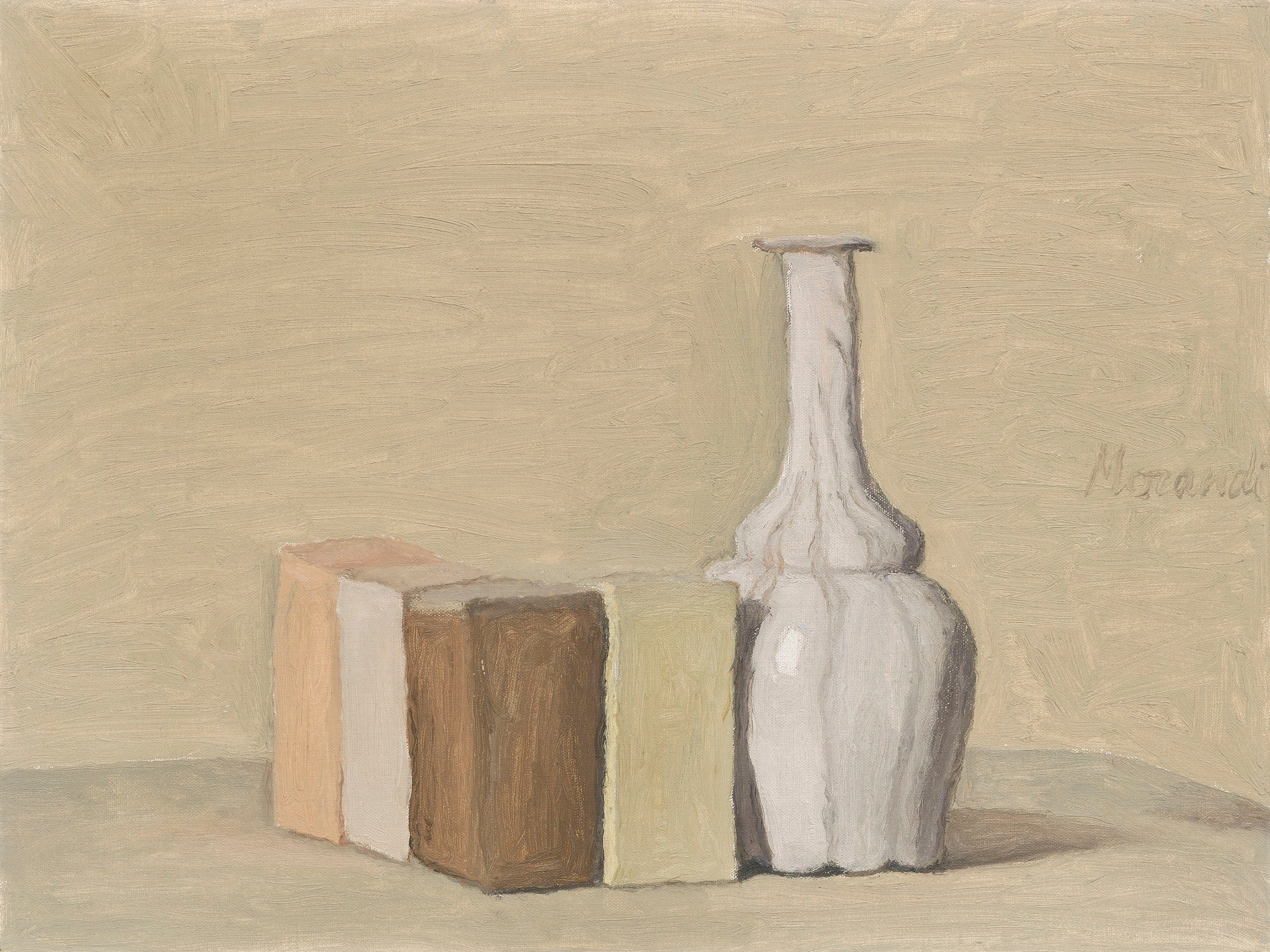

28
Salvo
Maggio
- Estimate
- $300,000 - 500,000
Further Details
In Maggio, 2009, Italian Modernist Salvo, born Salvatore Mangione, conjures a vernal late-Spring Eden. With a title translating to “May,” Salvo's highly stylized landscape appropriately depicts a rolling “Primavera” hillside, clear blue skies above, and the sleepy countryside gleaming in the afternoon sun's embrace. The scene was likely inspired by Salvo’s time spent in the valley of Costigliole d’Asti, nestled between the vineyard scenery of Langhe and Monferrato, whose picturesque views appear in many of his mature works. The wistful stillness in Maggio reflects Salvo’s distinctive approach to capturing nature’s beauty—distilling it to its essential component parts—as well as themes of identity, memory, and cultural heritage, showcasing his skillful merging of avant-garde conceptualism with a vibrant, representational aesthetic.
Beginning in late 1979, Salvo embarked on a three-decades-long exploration of the landscape genre, becoming renowned for his signature vivid, hyper-saturated depictions of nature and a visual language of trees and vegetation inspired by Giotto’s Scrovegni Chapel frescoes in Padua, Italy.i Maggio serves as an archetypical example of this evocation, distinguished by its monumental proportions, architectural rigor, and idyllic beauty. It epitomizes Salvo’s decades-long commitment to the genre of landscape and demonstrates his mastery in the manipulation of light and color, especially as concerns his ability to convey the passage of time.

Giotto di Bondone, Gioacchino tra i pastori (Joachim Among the Shepherds), c. 1304 - 1306. Scrovegni Chapel, Padua, Italy. Image: Manuel Cohen / Art Resource, NY
In the spirit of Giorgio de Chirico and Carlo Carrà, Salvo's landscapes found inspiration in the imagery of the Italian Renaissance. Dreamlike elements, simplified forms, and sharp contrasts of light and shadow in Maggio evoke imaginative depictions of nature and disquieting effects reminiscent of the Metaphysical Painting movement. In addition to exploring the psychology of place and abstract concepts like time, Salvo's earliest landscapes, characterized by their vibrant palettes and distinctive spheroid elements, defied contemporary aesthetics. They foreshadowed the resurgence of figurative painting in the mid-1980s—a vision that Salvo continued to embrace and refine throughout his career, as evidenced in his present work. Additional connections can be drawn between Salvo’s bold use and variation of color and the chromatic scale employed in models of postmodern design and architecture, such as the Milan-based Memphis Group’s highly ornamental, loud, and zany design style.

Giorgio de Chirico, The Soothsayer's Recompense, 1913. The Philadelphia Museum of Art, Pennsylvania. Image: Philadelphia Museum of Art, The Louise and Walter Arensberg Collection, 1950, 1950-134-38, Artwork: © 2024 Artists Rights Society (ARS), New York / SIAE, Rome
Starting in the late 2000s, Salvo’s paintings embraced the subject of the lowlands, introducing a new, more cinematic perspective in his landscapes. In Maggio, Salvo interrupts the line of vision, orchestrating a discordant exchange between the jagged peaks of mountains and rooftops. Meanwhile, the pillowy curvature of the clouds mingles with the puffball-like “Tiglio”—Italian for “Lime” or “Linden”—trees that are common to the area and after which the region was named.
“These valleys that are ranged one behind the other…They are springtime scenes, because that allows me to use spots of yellow, pink, and white, the colors of trees in the spring…In my view there has to be a pattern of colors in a large picture, and only a spring scene lets me do that.”
—Salvo
In Maggio, Salvo’s placid, almost still life-like, depiction of country life is replete with the promise of light. Yet, within these Elysian fields, nothing stirs, and there are no signs of life. The falseness in the repetition and fixedness of form—a kind of artificiality—belies an uneasy sense of paradise lost. He centers as his subject the interplay of light, color, and shape, without any reference to the figure or a clear narrative. The effect is that of a tableau, something fixed and fully realized that sits in dialogue with the simplicity and stillness in Giorgio Morandi’s intimate displays of cups, vases, and other household objects.
Salvo's reflection on his choice of spring scenes, characterized by colors inspired by nature's seasonal shifts, suggests a deliberate exploration of seriality within his paintings. He elaborates, "A picture is always a part of a sequence, and so you produce variations, a bit like Morandi’s subjects." This recognition of the iterative process mirrors Morandi's methodical exploration of variations within his still life compositions, whether through adjustments to the color palette or manipulation of forms. Shifting perspectives, altering the time of day, or adjusting the compositional relationships among familiar shapes, Salvo captures the elusive essence of portraying a definitive world image. Maggio emerges as a timeless testament to nature's fleeting phenomena, revealing its own limitations artfully.

Giorgio Morandi, Still Life, c. 1955. The National Gallery of Art, Washington, D.C. Image: National Gallery of Art, Washington, D.C., Gift of Mr. and Mrs. Harry Lenart in honor of Rusty and Nancy Powell, 1997.112.2, Artwork: © 2024 Giorgio Morandi, Artists Rights Society (ARS), New York/SIAE, Rome
“Every figure is contaminated with stasis, taken as something absolute, pulled outside of time and reproposed as a literal example of a still life: nature frozen into immobility, nature morte.”
—Angela Vettese ii
Salvo demonstrates an architectural focus in Maggio by simplifying natural forms into fundamental geometric shapes. In this way he echoes Paul Cézanne's stylistic approach to painting but removes every trace of his predecessor’s broken brushstrokes. Today, this stylized sensibility finds resonance in Nicolas Party's work, where his color palette and reductive forms visually echo Salvo's paintings. In Maggio’s simplified scenery, an essentially abstract composition of illusionistic color fields in foreshortened perspective, glowing unseen light sources, and neatly shaped topiary balance inaccessible and windowless buildings that seem hardly designed with human beings in mind, let alone lived in. The absence of any trace of human presence invites the viewer to connect with the idyllic beauty of this captivating scene.
i Archivio Salvo, Biography, 2016, accessed March 20, 2024, online.
ii Angela Vettese, “Salvo: Egoistic Painting,” in Flash Art International, no. 141, July 1988.